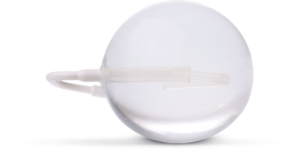How is obesity diagnosed and why is it crucial to enact positive lifestyle changes at the appropriate times? According to recent statistics, just over 13 per cent of the global population is considered to be obese (1). Not only does extreme obesity come with a plethora of potentially serious health risks, but this trend shows no signs of slowing down. A bit of information can therefore go a long way towards making the appropriate lifestyle changes sooner as opposed to later.
This article will delve into a handful of relavant topics. What is clinically obese? What are the most predominant factors that influence obesity? What are the merits and potential drawbacks of diagnostic tests for obesity? If you are concerned about the symptoms of being overweight and the long-term risks, the information outlined below will prove to be quite useful.
How to Tell if You're Obese ?
Is obesity a medical diagnosis? The short answer is a resounding “yes”. However, there are nonetheless other ways to determine if you might be suffering from this potentially debilitating condition. Here are some the physical symptoms of being overweight (2):
- Swelling and/or varicose veins in the lower extremities.
- A high body mass index (more on this a a bit later).
- You find it difficult to perform everyday tasks due to mobility issues.
- High blood pressure
- Skin discoloration known as “hyperkeratosis” in and around the armpits.
Having said this, self-diagnosis is not always the preferred approach due to its decidedly subjective nature. It should nonetheless be noted that those who have already suffered from childhood obesity are more likely to experience this condition (even progressing to morbid obesity) as adults. Furthermore, diagnosing obesity early can be particularly beneficial as obesity is a known risk factor for various health conditions, including cancer.
We can now begin to appreciate why obtaining a professional overweight diagnosis is the best way to mitigate the associated risks as well as to learn more about how the symptoms can be addressed over time. This leads us directly into the next section.

Criteria to Diagnose Obesity
There are several ways in which a specialist will provide a diagnosis of obesity. These commonly include:
- Calculating your body mass index (BMI).
- Measuring the circumference of your waist.
Note that while these methods have existed for some time, both offer unique advantages as well as a handful of possible drawbacks. We will now examine each in more detail.
Method 1: Using Body Mass Index (BMI)
This is arguably the most common approach and BMI calculations have been used for decades. Your body mass index simply represents a ratio between your height and weight. This is thereafter expressed as a whole number. Below you will find a quick breakdown of BMI figures in relation to different weight classes:
- A BMI between 16 and 17: Thin to moderately thin
- A BMI between 18.5 and 25: Normal
- A BMI between 25 and 30: Overweight
- A BMI of 30 or higher: Obese
In other words, BMIs are measured on a graduated scale. The higher the rating, the more likely you are to be classified as overweight or obese.
BMI for Adults
As highlighted in the previous section, a BMI of between (roughly) 16 and 25 is considered to be normal for adults. The World Health Organization (WHO) currently classifies adults as anyone who is 18 years of age or older.
BMI for Children and Teens
The BMI range that is typically healthy for children is actually quite similar to adults with only minor variations. This range currently stands between 18.5 and 24.9. Children who have been diagnosed with a BMI of 30 or higher are likewise classified as obese.
Limitations of BMI as a Diagnostic Tool
While these criteria for obesity may appear to be rather straightforward at first glance, a few limitations need to be mentioned. First and foremost, the weight portion of BMI does not take into account the presence of lean muscle mass. Muscles are denser than fat and therefore, they weigh more. This can potentially confound results in some cases (such as if a man is rather short and possesses a high level of lean mass). While he would be considered to be obese within the traditional BMI scale, this is certainly not the case.
Secondly, some studies have noted statistical deviations in regard to the BMI of men and women. In other words, this type of measurement should be used as a general reference and other factors (such as high muscle mass) must be taken into account by a professional.

Method 2: Using Waist Diagnostic Measurement
How is obesity diagnosed with this method? The approach is generally employed to measure the amount of visceral fat that tends to accumulate around the midsection. This fat has been linked to serious health risks such as high blood pressure and heart disease. BMI also plays a role.
Adults who have been diagnosed with a BMI of between 25 and 34.9 are particularly relevant here. Males with a waistline of 40 inches and women with a circumference of 35 inches are considered to be at a heightened risk of developing the aforementioned chronic conditions.
The Limitations of Waist Circumference Measurement as a Diagnostic Tools
Once again, waist circumference measurements are not without their potential flaws. Three possible downsides have been cited:
- The exact procedures have not yet been standardised.
- The data associated with obesity in children is not comprehensive (at the moment).
- Diagnostic accuracy decreases for those with a BMI of above 35.
However, waist circumference measurements can still provide a a general overview that may be used to develop targeted obesity treatments.
Other Diagnostic Measures
The good news is that other approaches have gained popularity in recent times and these can be used in synergy with the two options discussed previously. These include general health examinations such as vital signs, blood pressure, circulatory functions, and determining the condition of your heart and lungs.
Where Can I be Diagnosed?
How do you know if you re overweight and what is the best way to obtain an accurate diagnosis? There are numerous options to explore. It is first wise to consult with your primary care provider or a medical clinic. Nutritionists and personal trainers can also provide the insight that you require to enact a more proactive approach.
Seeking Treatment After Diagnosis
Thanks in no small part to modern medical advancements, there are more options at your disposal than ever before if you are looking to treat chronic obesity. This is even more relevant if you have found it difficult to lose weight with traditional techniques such as diet and exercise alone.
One effective method involves the Spatz3 adjustable gastric balloon. Not only can this balloon remain in place for longer periods of time when compared to generic alternatives, but its flexible nature will often be customised to suit the needs of each patient.
Answering the question “how is obesity diagnosed” is therefore just as important a understanding the cutting-edge solutions at your disposal.
Sources:
1. https://www.who.int/news-room/fact-sheets/detail/obesity-and-overweight
2. https://www.clinicbarcelona.org/en/assistance/diseases/obesity/symptoms
3. https://www.ncbi.nlm.nih.gov/pmc/articles/PMC1114291
4.https://www.hsph.harvard.edu/obesity-prevention-source/obesity-definition/how-to-measure-body-fatness/


